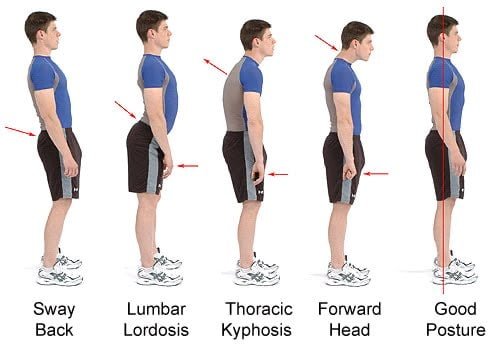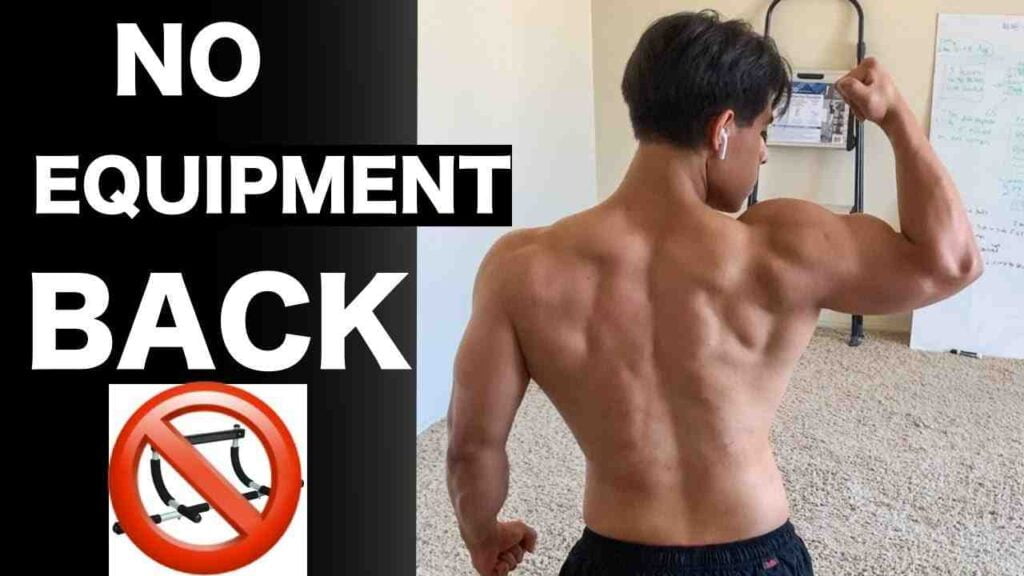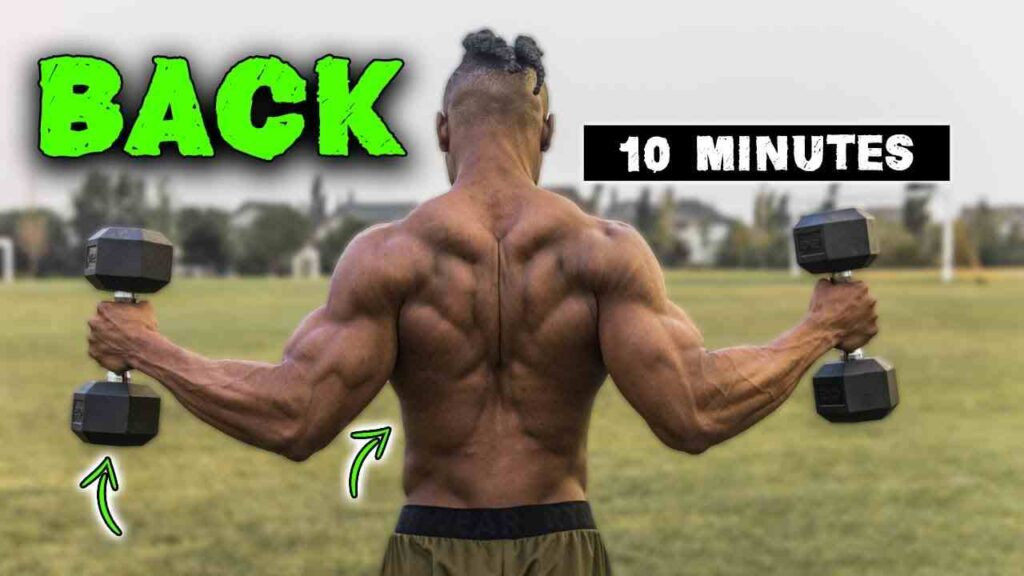Introduction
Are you ready to transform your upper body strength without the need for a pricey gym membership or complex equipment? If so, you’re in the right place. This comprehensive guide is your ticket to mastering the resistance band lat pulldown exercise, a highly effective and versatile workout that can be done virtually anywhere. Whether you’re a fitness enthusiast or a beginner, we’ll take you on a journey through the ins and outs of this incredible exercise, helping you understand its benefits, correct form, variations, and much more.
What is a Resistance Band Lat Pulldown?
A Resistance Band Lat Pulldown, often referred to as a “lat pulldown” or “band lat pulldown,” is a versatile and effective strength training exercise designed to target the muscles in your upper body, primarily focusing on the latissimus dorsi, or “lats.” This exercise can be performed virtually anywhere, making it a fantastic addition to your home or travel workout routine.
Key Components of a Resistance Band Lat Pulldown
- Resistance Band: The star of the show is the resistance band itself. It’s a flexible, elastic band that comes in various resistance levels. You can choose a band with the resistance that suits your fitness level.
- Anchoring Point: To perform the resistance band lat pulldown, you’ll need a secure anchoring point. This can be a door frame, a sturdy overhead bar, or any stable structure that can bear your weight and the tension of the band.
- Body Position: You’ll be using your body weight and the resistance band to mimic the action of a lat pulldown machine. To do this, you’ll kneel or stand, depending on the variation, and pull the band down to your chest, engaging your back and arm muscles.
Muscles Targeted
- Latissimus Dorsi (Lats): The primary target of the resistance band lat pulldown is the lats. These broad, fan-shaped muscles are responsible for the V-shape that many people desire. Strengthening your lats can improve your posture and help you with various upper-body movements.
- Biceps: While not the main focus, your biceps get a good workout during this exercise as you pull the band down. This can be an added bonus for those looking to tone their arms.
- Rhomboids: The rhomboids, located between your shoulder blades, are engaged as you squeeze your shoulder blades together during the pulldown motion. This helps improve your posture and upper back strength.
- Traps: The trapezius muscles, commonly known as “traps,” are worked as you pull the band towards your chest. Developing your traps can provide that sturdy, well-rounded shoulder look.
SHOP FOR THE RESISTANCE BAND ON AMAZON
In summary, the resistance band lat pulldown is a highly effective exercise for developing upper body strength and improving posture. It’s a versatile exercise that can be tailored to your fitness level, and it’s an excellent addition to your home workout routine.
Why Choose Resistance Bands?
Resistance bands have gained immense popularity for a variety of reasons, making them a smart choice for fitness enthusiasts of all levels:
1. Cost-Effective: Resistance bands are significantly more affordable than gym memberships or purchasing heavy exercise equipment. You can get a high-quality resistance band set for a fraction of the cost of a gym membership or a cable machine.
2. Portability: Resistance bands are lightweight and compact, making them perfect for travel or home workouts. You can easily stash them in your bag and exercise wherever you go.
3. Versatility: These bands come in various resistance levels, allowing you to tailor your workouts to your fitness level. This adaptability is excellent for both beginners and experienced athletes.
4. Full-Body Workouts: Resistance bands can be used to target multiple muscle groups, offering a comprehensive workout experience. They’re not limited to just one exercise, so you can engage in various workouts with a single piece of equipment.
5. Joint-Friendly: They provide a lower impact on your joints compared to traditional weights, reducing the risk of injury. This is especially beneficial for those with joint issues or who are recovering from injuries.
In summary, resistance bands are a budget-friendly, portable, versatile, and joint-friendly option for fitness enthusiasts. They enable you to perform a wide range of exercises, including the resistance band lat pulldown, from the comfort of your home or while on the go.
Getting Started: Setting Up
It’s crucial to ensure that you have the right setup. Setting up correctly not only enhances the effectiveness of the exercise but also reduces the risk of injury.
Choose the Right Resistance Band
Selecting the right resistance band is crucial for an effective workout. Bands come in various thicknesses or levels of resistance. Beginners should start with a band that provides light to moderate resistance. As you progress, you can opt for thicker bands to challenge yourself further.
Anchoring Options
For the resistance band lat pulldown, you need a secure anchor point. This can be a sturdy horizontal bar, a door anchor, or a purpose-built resistance band anchor. Here’s how to set up with different options:
- Horizontal Bar: If you have access to a horizontal bar, simply drape the resistance band over it. Make sure it’s securely attached, and that it won’t slip off during your exercise.
- Door Anchor: Door anchors are handy tools for home workouts. Slide the anchor behind a closed door at chest height, and make sure it’s secure. Close and lock the door, ensuring that the anchor won’t come loose during your workout.
- Purpose-Built Anchor: If you have a dedicated resistance band anchor, follow the manufacturer’s instructions for setup. These anchors are designed to provide a stable attachment point for your bands.
Ensure that your resistance band is securely attached to the anchor before beginning your lat pulldown exercise. This minimizes the risk of accidents and ensures a safe and effective workout.
Proper Form and Technique

Achieving the maximum benefit from resistance band lat pulldowns requires proper form and technique. Performing the exercise correctly ensures you’re targeting the right muscles and minimizing the risk of injury. Here’s a step-by-step guide to nailing the correct form:
1. Set-Up:
- Begin by securing your resistance band to a sturdy anchor point above you.
- Grasp the band with both hands, ensuring that your palms are facing forward.
2. Stance:
- Stand with your feet shoulder-width apart for stability.
- Keep your back straight, chest up, and shoulders relaxed.
3. Execution:
- Start with your arms fully extended, and hands above your head.
- Engage your lats and initiate the movement by pulling your elbows down and back.
- Bring your hands towards your chest, squeezing your shoulder blades together at the bottom of the movement.
- Slowly return to the starting position, extending your arms fully.
4. Breathing:
- Inhale as you extend your arms at the top.
- Exhale as you pull the band down and back.
5. Repetitions and Sets:
- Aim for 3-4 sets of 10-15 repetitions.
- Adjust the resistance level of your band to match your fitness level.
Common Mistakes to Avoid
- Jerking Movements: Avoid using momentum to pull the band down. Focus on controlled and deliberate movements.
- Overarching Your Back: Maintain a neutral spine position throughout the exercise. Do not arch your lower back excessively.
- Neglecting Breathing: Breathe out as you pull the band down and inhale as you release it. Proper breathing helps stabilize your core and maintain good form.
- Using Too Heavy a Resistance: Starting with a resistance band that’s too challenging can compromise your form. Gradually progress to heavier bands as you get stronger.
SHOP FOR THE DOORWAY ANCHOR ON AMAZON
By following these form and technique guidelines, you’ll not only prevent injury but also ensure that you get the most out of your resistance band lat pulldown workout.
Variations of Resistance Band Lat Pulldown
Variety is the spice of life, and it’s no different when it comes to your fitness routine. Here are some exciting variations of the resistance band lat pulldown that will keep your workouts engaging and help you target different muscle groups:
Narrow Grip vs. Wide Grip
Narrow Grip: By gripping the resistance band with your hands positioned closer together, you can place more emphasis on your inner back muscles and biceps. This variation also engages your forearms.
Wide Grip: Conversely, a wide grip widens the focus to your outer back muscles and shoulders. It’s an excellent option to create a broader V-taper in your upper body.
Single-Arm Lat Pulldown
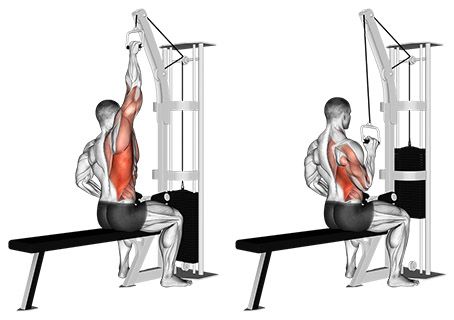
This variation is particularly beneficial for addressing muscle imbalances and working on your core stability. Secure one end of the resistance band and perform the lat pulldown with one arm at a time. You’ll feel the burn as you engage your core to stay balanced.
Kneeling Lat Pulldown
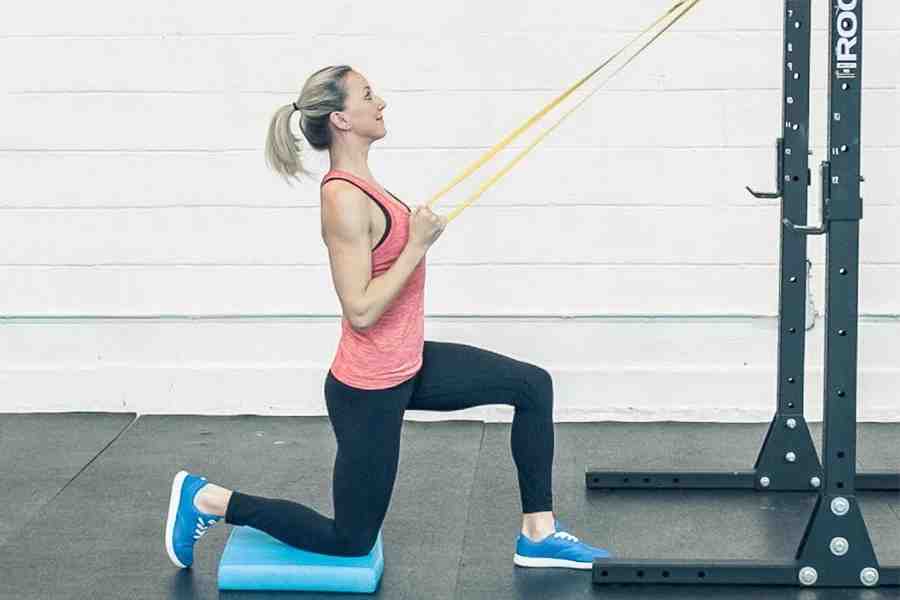
Kneeling during the lat pulldown shifts the focus to your lower back muscles and engages your glutes more than the traditional seated or standing position. It’s a fantastic option if you want to work on your lower back strength.
Resistance Band Pulldown with a Twist
This variation adds a rotational element to the exercise. After pulling the resistance band down to your chest, twist your torso to one side, engaging your oblique muscles. Alternate sides with each repetition for a complete core workout.
Isometric Lat Pulldown
Instead of the typical up-and-down motion, the isometric lat pulldown involves holding the band at different points during the movement. Pause for a few seconds at the top, middle, and bottom of the pull to challenge your muscles differently and increase time under tension.
Assisted Lat Pulldown
If you’re just starting with resistance band lat pulldowns or are working toward your first unassisted pull-up, this variation is ideal. Anchor the band above you and place one knee on the band, allowing it to assist you on the way up.
Remember to maintain proper form and control with these variations, just as you would with the traditional resistance band lat pulldown. Choose the one that aligns with your fitness goals and add a dash of variety to your routine.
Incorporating these variations can prevent workout monotony and provide a well-rounded upper-body workout that targets different muscle groups while challenging your stability and core strength.
Incorporating Resistance Band Lat Pulldowns into Your Workout Routine
Incorporating resistance band lat pulldowns into your workout routine is an excellent way to target and strengthen your back and latissimus dorsi muscles. This exercise mimics the traditional lat pulldown performed on a cable machine but provides a portable and cost-effective alternative.
Frequency
How often you should perform resistance band lat pulldowns depends on your fitness goals and overall workout plan. For general fitness and muscle toning, aim to include this exercise in your routine 2-3 times a week. This frequency allows for muscle recovery and growth.
Combining with Other Exercises
To maximize the benefits of resistance band lat pulldowns, consider combining them with complementary exercises. Here are some great pairings:
- Push-Ups: Pairing lat pulldowns with push-ups creates a balanced upper-body workout. The lat pulldown targets your back and biceps, while push-ups work your chest and triceps.
- Planks: After doing lat pulldowns, engage your core with planks. Planks are fantastic for building core strength and stability.
- Rows: Incorporate resistance band rows to further strengthen your back and balance out your upper body muscles.
- Shoulder Exercises: Consider adding shoulder exercises like lateral raises or overhead presses to work on your shoulder muscles, creating a well-rounded upper-body workout.
- Cardio: If you’re looking for a full-body workout, you can intersperse resistance band lat pulldowns with cardio exercises like jumping jacks or jogging in place. This will keep your heart rate up and boost your overall fitness.
SHOP FOR THE EXERCISE MAT ON AMAZON
Remember that the key to a successful workout routine is consistency. Stick to a schedule that works for you, gradually increasing the resistance or intensity over time as your strength improves.
FAQs
Q 1. Is the resistance band lat pulldown suitable for beginners?
Ans. Yes, the resistance band lat pulldown is beginner-friendly. Start with a lighter resistance band to practice your form and gradually increase the resistance as you become more comfortable.
Q 2. Can resistance band lat pulldowns replace traditional lat pulldown machines at the gym?
Ans. While resistance band lat pulldowns offer similar benefits, they may not fully replace gym machines. They are a great alternative for home workouts or when you’re on the go.
Q 3. How many reps and sets should I do for resistance band lat pulldowns?
Ans. The ideal rep and set range varies based on your fitness goals. Typically, 3-4 sets of 8-12 reps are suitable for muscle growth, while 2-3 sets of 12-15 reps are great for endurance.
Q 4. Can resistance band lat pulldowns help with posture improvement?
Ans. Yes, by strengthening the muscles in your upper back and shoulders, this exercise can contribute to better posture and reduced slouching.
Q 5. Is it safe to do resistance band lat pulldowns if I have a shoulder injury?
Ans. It’s crucial to consult a healthcare professional or physical therapist if you have a shoulder injury. They can provide guidance on whether resistance band lat pulldowns are safe for your specific condition.
Q 6. Can resistance band lat pulldowns help with weight loss?
Ans. While resistance band lat pulldowns primarily target muscle development, they can contribute to overall calorie expenditure, which may aid in weight loss when combined with a balanced diet and cardio exercises.
Conclusion
In conclusion, the resistance band lat pulldown is a versatile and effective exercise that can help you build a stronger and more defined upper body. Its simplicity, affordability, and adaptability make it an excellent choice for individuals of all fitness levels. By incorporating the correct form and variations, you can reap the numerous benefits it offers, from improved back strength and posture to enhanced overall fitness.

Good day, and welcome to Fitthour. My name is Shubham Vijay, and I am a certified personal trainer and nutrition coach with 6 years of experience in the fitness industry. At Fitthour, we specialize in types of training, such as strength training, cardio, or HIIT, and our mission is to help clients achieve their fitness goals and improve their overall health.

